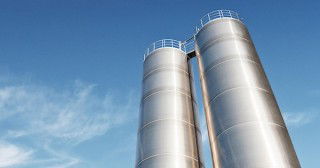The practical implications following microscopic examination discussed in the April 2013 issue of ICR showed that the interpretation of alite size is not a simple matter. We take a closer look at the relationship between burning conditions, alite crystal size and cement quality.
Several factors come into play when considering alite size including flame length and temperature, nucleation, production and kiln conditions, chemical factors, siliceous residue, size and quality.
Flame length and temperature
A popular method of clinker microscopy interpretation was developed by Ono. He considered that alite size depends on burning and crystallisation rates. Campbell1 describes Ono’s model as follows: “Quick-burning by a short flame produces small crystals formed (a) at low temperature by direct contact of CaO and C2S, and (b) at high temperature; both developments are relatively rapid. Slow-burning in a long flame produces large alite crystals.” So alite size depends on the heat and length of the main burner flame.
